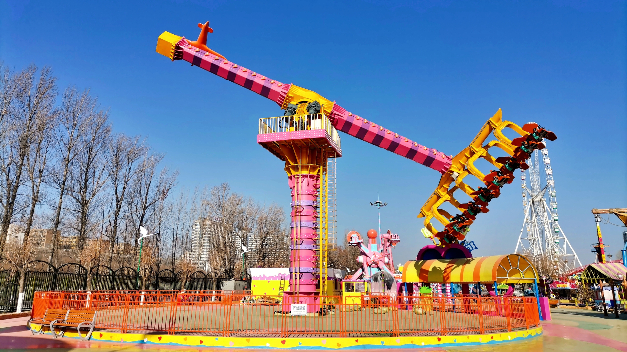basic roller coaster design
Basic Roller Coaster Design
Roller coasters have become iconic attractions in amusement parks around the world. Known for their thrilling drops, sharp turns, and exhilarating speeds, they are a perfect blend of engineering prowess and entertainment. The design of a roller coaster, from concept to reality, involves a meticulous process that incorporates physics, safety regulations, and creative vision. This article explores the fundamental aspects of roller coaster design.
Understanding the Physics
At the core of any roller coaster is the application of physics, particularly the principles of potential and kinetic energy. The ride begins with the ascent to the highest point, where the coaster car is pulled up, typically by a chain lift. At this height, the car possesses maximum potential energy. As it descends, this energy converts into kinetic energy, propelling the car forward at increasingly higher speeds. Designers must carefully calculate these energy transitions to create thrilling drops that excite riders while ensuring safety.
Path Design and Layout
The path of a roller coaster, or its layout, is critical in determining the thrill and safety of the ride. Designers use computer-aided design (CAD) software to plot curves, slopes, and loops. The key is to create a balance between thrilling elements and manageable forces on the riders’ bodies. Concepts such as lateral G-forces (which push the rider sideways) and vertical G-forces (which push the rider down into their seat) are essential considerations. Too much force can lead to discomfort or nausea, so designers aim to keep these forces within acceptable limits.
Common elements in roller coaster design include
1. Drops The initial drop is often the most significant in terms of thrill. Designers calculate the angle and height of the drop to maximize speed while ensuring a safe landing. 2. Loops Vertical loops provide a classic thrilling experience, and their diameter must be carefully designed to ensure that riders remain safely constrained in their seats throughout the loop.
3. Inversions These are elements that turn riders upside down, such as corkscrews and barrel rolls. The design of these elements demands an understanding of centrifugal forces and rider comfort.
basic roller coaster design

4. Banked Turns Banking turns helps to reduce lateral G-forces, allowing for sharper turns while providing a smoother experience for the riders. The incline of these banks must be accurately calculated.
Safety Considerations
Safety is paramount in roller coaster design. Every aspect of the ride must adhere to strict regulatory standards, which vary by country and region. Engineers conduct rigorous tests and simulations to predict how the ride will behave under various conditions. Additionally, safety features such as restraints, emergency brakes, and evacuation protocols are integrated into the design.
Restraints are particularly crucial, as they keep riders securely in their seats during high-speed maneuvers. The type of restraint system—whether it be lap bars, over-the-shoulder harnesses, or a combination—depends on the design of the coaster and the intended experience.
Aesthetic and Creative Elements
Beyond the physics and safety, roller coasters also incorporate aesthetic and thematic elements that enhance the overall experience. Themed coasters might be designed to fit a particular narrative or environment, such as a pirate adventure or a space journey. These themes can influence the color scheme, sound effects, and even the shape of the coaster itself. The visual impact of a roller coaster can attract visitors, making the aesthetics of the ride a vital part of its overall design.
Conclusion
The design of a roller coaster is a complex interplay of engineering, physics, safety, and creativity. From the initial concept to the final ride, every detail is carefully crafted to ensure a thrilling yet safe experience for riders. As technology continues to evolve, the future of roller coaster design holds the promise of even more innovative and exciting experiences, pushing the boundaries of what we know about amusement rides. Whether you’re a thrill-seeker or simply an admirer of engineering marvels, roller coasters will continue to captivate and excite audiences for generations to come.
-
Top Amusement Equipment Manufacturer Rock n Roller Coaster & Carousel ManufacturerJun.10,2025
-
World's Scariest Roller Coaster Experience Ultimate Thrill & HeightJun.10,2025
-
Ultimate Thrill Ride Roller Coaster High-Speed, Safe AdventureMay.30,2025
-
Carousel Mansfield Rides Premium Indoor & Event SolutionsMay.30,2025
-
T3 Roller Coaster High-Thrill, Safe Ride for Theme Parks & ResortsMay.30,2025
-
Roller Coaster Cart Design Custom-Built & High-Safety Thrill Ride VehiclesMay.30,2025
